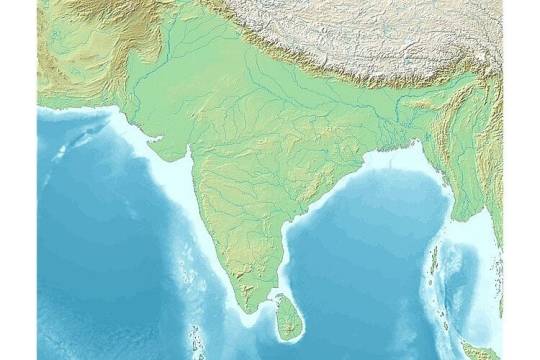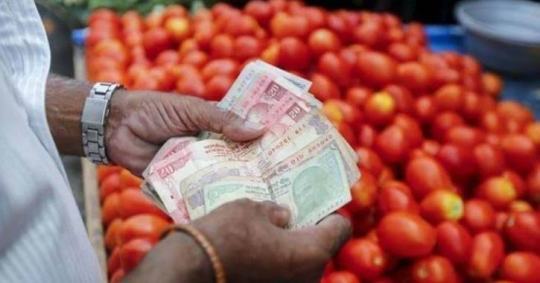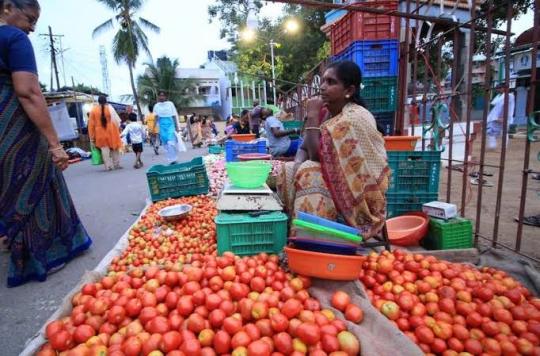#PolicyReforms
Text
South Asia Growth: A Closer Look Beyond the Numbers

South Asia's economic horizon glows with promise as 2024 forecasts herald it as the world’s fastest-growing region. Driven by the robust engines of India, Pakistan, and Sri Lanka, the region seems poised to stride confidently forward.
This expected growth of 6.0%, an impressive figure in the global context, paints a picture of vitality and progress. Yet, beneath this veneer of prosperity, challenges simmer, hinting at a complex narrative that awaits unpacking.
The World Bank’s "Jobs for Resilience" report provides a crucial lens through which to view this landscape, blending optimism with a dose of reality. It reveals a region at a crossroads, where vibrant growth meets structural vulnerabilities.
As South Asia juggles these dynamics, the focus sharpens on the need for strategic reforms and resilience-building measures, framing a storyline that is as much about caution as it is about celebration.
Robust Growth Amid Structural Challenges
South Asia is on a trajectory to maintain its status as the world's fastest-growing region through 2025, with an impressive growth rate of 6.0% projected for 2024, spearheaded by India's dynamic economy and promising recoveries in Pakistan and Sri Lanka.
Yet, the World Bank's latest regional outlook, "Jobs for Resilience," casts a shadow on this bright forecast, revealing deep-seated structural challenges that could dampen the region's economic vigor.
The Dichotomy of Growth and Employment
Despite this promising growth, a closer examination reveals a region grappling with pre-pandemic growth levels and an over-reliance on public spending.
The stark slowdown in private investment growth across South Asian countries is a red flag, signaling a need for a strategic pivot to ensure sustainable economic expansion.
Moreover, the burgeoning working-age population—a potential demographic dividend—is met with insufficient job creation, posing a significant hurdle to harnessing the region's full economic potential.
Navigating Fiscal Fragility and Climate Concerns
Martin Raiser, the World Bank's Vice President for South Asia, underscores the importance of bolstering private investment and employment growth to fortify the region against fiscal fragilities and the ever-looming threat of climate shocks.
The current growth, though strong, is tethered to shaky foundations that require robust policy interventions to secure a resilient future.
The Employment Conundrum
A striking revelation from the World Bank report is the declining employment ratio in South Asia, now standing at 59% compared to 70% in other emerging markets.
This decline, especially pronounced among working-age men and even more so among women, underscores a missed opportunity to leverage the demographic dividend for economic upliftment.
Franziska Ohnsorge, World Bank Chief Economist for South Asia, estimates that aligning the region's employment share with that of other emerging markets could potentially boost output by 16%.
Unlocking Growth Through Firm Expansion and Job Creation
The path to vibrant, competitive firms—and by extension, robust private investment and job growth—lies in overcoming institutional and economic hurdles.
The report advocates for a multi-faceted policy approach focusing on trade openness, access to finance, and the removal of barriers to women's economic participation, among others.
Such measures promise not just to spur firm growth and job creation but also to enhance the region's capacity to adapt to climate change.
Country-Specific Outlooks Paint a Mixed Picture
- Bangladesh and Bhutan both anticipate growth rates of 5.7% in FY24/25, though Bangladesh faces challenges from high inflation and trade restrictions.
- India continues to lead the region's economy, expected to achieve a 7.5% growth rate in FY23/24, with sustained activity in services and industry.
- Maldives sees a slight downgrade to 4.7% growth in 2024, reflecting a shift in tourist preferences.
- Nepal looks forward to a 4.6% growth rate in FY24/25, buoyed by hydropower exports, while Pakistan and Sri Lanka are poised for recovery, with growth rates of 2.3% and 2.5% respectively in FY24/25.
The World Bank's analysis not only highlights South Asia's impressive economic trajectory but also emphasizes the critical need for policy reforms to navigate the region's complex challenges.
As South Asia strides toward continued growth, the focus must remain on creating a resilient and inclusive economy that can weather both fiscal and climate-related shocks.
Table With Historical Data
Real GDP growth at constant market prices (percent)
Revision to forecast from October 2023 (percentage point)
Country fiscal year
Calendar year basis
2022
2023(e)
2024(f)
2025(f)
2024(f)
2025(f)
South Asia region (excluding Afghanistan)
5.7
6.6
6.0
6.1
0.4
0.3
Maldives
Jan. to Dec.
13.9
4.0
4.7
5.2
-0.5
-0.3
Sri Lanka
Jan. to Dec.
-7.3
-2.3
2.2
2.5
0.5
0.1
Fiscal year basis
21/22
22/23(e)
23/24(f)
24/25(f)
23/24(e)
24/25(f)
Bangladesh
July to June
7.1
5.8
5.6
5.7
0.0
-0.1
Bhutan
July to June
4.8
4.6
4.9
5.7
0.9
1.1
India
April to March
9.7
7.0
7.5
6.6
1.2
0.2
Nepal
mid-July to mid-July
5.6
1.9
3.3
4.6
-0.6
-0.4
Pakistan
July to June
6.2
-0.2
1.8
2.3
0.1
0.0
Sources: World Bank Macro Poverty Outlook and World Bank staff calculations.
Note: (e) = estimate; (f) = forecast. GDP measured in average 2010-19 prices and market exchange rates. Pakistan is reported at factor cost. National accounts statistics for Afghanistan are not available.
To estimate forecasts for regional aggregates in the calendar year, fiscal year forecasts are converted to the calendar year by taking the average of two consecutive fiscal years for Bangladesh, Bhutan, Nepal, and Pakistan because quarterly GDP forecasts are not available.
The World Bank’s development updates for Bangladesh, Nepal, Pakistan, and Sri Lanka were also released today.
Sources: THX News & The World Bank.
Read the full article
#climateshocks#Demographicdividend#Economicresilience#Jobcreation#policyreforms#privateinvestment#regionaloutlook#SouthAsiagrowth#structuralchallenges#WorldBankReport
0 notes
Text

Companies Next offers expert assistance in ensuring compliance with FEMA regulations for Foreign Direct Investment (FDI) in India. From navigating complex reporting requirements to liaising with regulatory authorities, we streamline the compliance process, ensuring accuracy and timeliness. Trust us for comprehensive post-compliance support and peace of mind.
#FDI#ForeignDirectInvestment#India#EconomicGrowth#InvestmentOpportunities#PolicyReforms#RegulatoryChallenges#SustainableDevelopment#SectoralPreferences#EmergingMarkets
0 notes
Text
#FDI#ForeignDirectInvestment#India#EconomicGrowth#InvestmentOpportunities#PolicyReforms#RegulatoryChallenges#SustainableDevelopment#SectoralPreferences#EmergingMarkets
0 notes
Text
प्रधानमंत्री मोदी का यशोभूमि एक्सपो में बड़ा ऐलान
पीएम विश्वकर्मा योजना प्रधानमंत्री मोदी ने ‘पीएम विश्वकर्मा योजना’ की शुरुआत की है, जिसके तहत विश्वकर्मा साथियों को बिना गारंटी के 3 लाख रुपए तक का कर्ज़ मिलेगा। प्रधानमंत्री मोदी ने इस योजना को लांच करते समय बताया कि ब्याज़ के दर को काफ़ी कम किया गया है। प्रधानमंत्री मोदी ने युशुभामि इंडिया इंटरनेशनल कन्वेशन … Read more
#ModiAnnouncement#YashobhoomiExpo#PMModiSpeech#KeyAnnouncement#IndiaDevelopment#ExpoHighlights#GovernmentInitiatives#EconomicBoost#NationalProgress#PolicyReforms
0 notes
Text
The Soaring Tomato Prices in India: Factors, Consequences, and Potential Solutions

Introduction: In recent times, the skyrocketing prices of tomatoes in India have become a cause for concern among consumers, traders, and policymakers. This blog post aims to delve into the reasons behind the surge in tomato prices, analyze its impact on various stakeholders, and explore potential solutions to address this issue.
Factors Influencing Rising Tomato Prices:
Seasonal Variations and Weather Conditions: Fluctuations in tomato production due to seasonal changes, adverse weather conditions, and natural disasters can disrupt the supply, leading to price spikes.
Transportation and Storage Challenges: Inadequate infrastructure, inefficient logistics, and lack of proper storage facilities contribute to post-harvest losses, which further impact the supply and prices.
Demand-Supply Imbalance: A surge in demand, especially during festive seasons and periods of high consumption, coupled with insufficient supply, can drive up tomato prices.
Impact of Rising Tomato Prices:
Household Budgets and Inflation: Rising tomato prices can have a direct impact on consumers' monthly expenses and overall inflation rates, as tomatoes are a staple ingredient in Indian cuisine.
Farmer Income and Livelihoods: Higher prices may benefit tomato farmers in the short term, but long-term price volatility can impact their income stability and farming practices.
Food Processing and Restaurant Industry: Rising tomato prices can affect food processors, restaurants, and street food vendors, potentially leading to increased menu prices and reduced profit margins.
Potential Solutions and Mitigation Strategies:
Improved Agricultural Practices: Encouraging farmers to adopt modern agricultural techniques, use high-yielding tomato varieties, and implement proper crop management practices can enhance productivity and minimize losses.
Strengthening Supply Chain Infrastructure: Investments in transportation, cold storage facilities, and better market linkages can reduce post-harvest losses, improve supply efficiency, and stabilize tomato prices.
Diversification and Crop Planning: Promoting crop diversification by supporting farmers to cultivate alternative vegetables and implementing effective crop planning strategies can help manage supply-demand dynamics.

Government Interventions: The government can intervene by implementing price control measures, providing subsidies, and supporting farmer cooperatives to stabilize tomato prices and safeguard consumer interests.

Conclusion: The rising prices of tomatoes in India pose significant challenges for consumers, farmers, and the food industry. Understanding the underlying causes, assessing the impact, and exploring effective solutions are crucial for addressing this issue. Collaborative efforts between farmers, policymakers, and stakeholders across the supply chain are necessary to ensure a more sustainable and affordable tomato market in India.
Disclaimer: The information provided in this blog post is based on available knowledge up to September 2021. The tomato market is subject to dynamic changes, and the situation may have evolved since then.
#TomatoPrices#IndianAgriculture#FoodInflation#SupplyChain#CropProduction#WeatherImpact#PostHarvestLoss#DemandSupply#ConsumerImpact#FarmersLivelihood#FoodProcessingIndustry#InfrastructureDevelopment#CropDiversification#GovernmentInterventions#PriceStabilization#SustainableAgriculture#MarketLinkages#RuralDevelopment#AffordableFood#PolicyReforms
1 note
·
View note
Text
Is the Argentine economy okay as it is?

Argentina's economy
Argentina is grappling with a severe economic crisis characterized by soaring inflation rates, currency depreciation, and dwindling employment opportunities. As of October 2018, the country's consumer price inflation rate stood at 45.9%, the highest since 1991.
Some of the factors contributing to Argentina's inflation problem include
Devaluation of the Argentine peso: This is mainly due to the government's fiscal policy and foreign currency borrowing issues.
Lack of employment: A lack of jobs can increase demand, which can drive up prices.
Inflation itself: Inflationary expectations contribute to higher inflation rates.
Decline in agricultural output: Climate change has led to a decline in productivity, which in turn has led to a decline in agricultural output.
What can I do?
To mitigate the ongoing economic crisis, the Argentine government and central bank have implemented a number of measures, including raising interest rates and announcing price stabilization measures. However, these efforts may not be enough and additional actions are needed.
Focus on reducing the inflation rate: Policy reforms in agriculture, transportation, energy, and other industries can help increase productivity and stabilize prices for products and services.
Take steps to stabilize prices: Governments should monitor the rate of inflation and adjust prices when necessary to protect consumers.
Transparent information: Providing citizens with accurate information about economic conditions can help them understand the situation and take action.
#ArgentinaEconomy#InflationCrisis#ArgentinePeso#EconomicReform#PriceStabilization#EmploymentIssues#AgricultureCrisis#ClimateChangeImpact#PolicyReforms#FinancialRecovery
0 notes
Text
An open letter to the U.S. Congress
Stop overfunding Medicare Advantage!
597 so far! Help us get to 1,000 signers!
At tremendous cost to taxpayers and people with Medicare, the government has overpaid Medicare Advantage plans tens of billions of dollars for more than a decade and is projected to overpay them more than $1 trillion in the next decade. Just as the government recoups overpayments to individuals it should be recouping Medicare Advantage overpayments, not rewarding them with greater revenues. In addition to driving up costs for everyone with Medicare, it is eroding the Medicare Trust Fund. I urge you to reduce MA rates to a level commensurate with Traditional Medicare and recoup all overpayments. Thanks!
📱 Text SIGN PEBQCM to 50409
🤯 Liked it? Text FOLLOW JESSCRAVEN101 to 50409
#JESSCRAVEN101#PEBQCM#resistbot#open letter#petition#USCongress#Medicare#MedicareAdvantage#Healthcare#GovernmentSpending#BudgetAllocation#TaxpayerCost#HealthcareSystem#PublicHealth#PolicyChange#GovernmentOversight#Legislation#HealthcareCosts#HealthcareReform#FinancialOversight#HealthInsurance#PublicFunding#GovernmentEfficiency#FiscalResponsibility#PolicyReform#CostReduction#TaxpayerConcerns#MedicareTrustFund#HealthcareEquity#PublicPolicy
4 notes
·
View notes
Text

The Cost of Marijuana Prohibition: Examining Criminal Justice Reform
Disproportionate Incarceration: The criminalization of marijuana has led to a significant number of individuals, particularly from marginalized communities, being incarcerated for non-violent marijuana offenses. This has contributed to the issue of mass incarceration and strained the criminal justice system.
Economic Implications: Enforcing marijuana prohibition incurs substantial costs, including law enforcement resources, court proceedings, and incarceration expenses. Legalizing and regulating marijuana can create new revenue streams through taxation, job creation, and economic growth.
Racial Disparities: Marijuana prohibition has disproportionately affected minority communities, leading to racial disparities in arrest and conviction rates. Criminal justice reform aims to address these disparities and promote equity by reevaluating marijuana policies and implementing fair and just alternatives.
To read the full article and delve deeper into the cost of marijuana prohibition and the need for criminal justice reform, click the following link

#MarijuanaProhibition#CriminalJusticeReform#WarOnDrugs#DrugPolicy#JusticeSystem#SocialJustice#DrugReform#LegalizeMarijuana#EndingProhibition#PolicyReform
5 notes
·
View notes
Link
#capstone #capstoneproject #matters #potential #project #unlocking #why #your #fooddeserts #communityempowerment #health #access #nutrition #logisticalconstraints #holisticapproach #multifaceted #freshfoods #underservedneighborhoods #empoweringnarratives #policyreform #communityinvolvement
#capstone#capstoneproject#capstone projects#communityinvolvement#policyreform#empoweringnarratives#underservedneighborhoods#freshfoods#fresh foods#multifaceted#holistic approach#holisticapproach#logisticalconstraints
0 notes
Text
🚨 Sweden's Untold Crisis Unveiled! 🇸🇪🔍 Watch Now!
🌐 Dive deep into Sweden's shocking transformation! From celebrated safety to gun violence surge - the stats are jaw-dropping! 😱
🔥 Violence, Gang Wars, Right-Wing Surge - this is not your average story. Click the link, join the conversation, and let's explore together! 🚀
📺 Watch the video:
youtube
#sweden#migration#asylum#SwedenDilemma#MustWatch#EyeOpeningVideo#immigration#socialchallenges#multiculturalismo#PolicyReform#RightWingSurge#FutureOfSweden#stayinformed#stayengaged#Youtube
0 notes
Text
🌟 Small businesses face big challenges, but with resilience and ingenuity, they thrive! 💡 At CGFS LLC, we understand the hurdles of limited government programs. Our mission? Empower you to conquer these obstacles and achieve your business dreams. 🚀 Let's navigate the path together!
youtube
Contact Us:
🌐 Visit our website: https://cgfsllc.com/
📞 Contact us: 1-307-456-1226
📧 Email us: [email protected]
#SmallBusinessSuccess #CGFSLLC #EmpowerEntrepreneurs #SmallBusinessStruggles #GovernmentSupportNeeded #SmallBizChallenges #EntrepreneurialHurdles #SupportLocalBusiness #PolicyChangeNeeded #SmallBusinessAdvocacy #EconomicSupport #SMEsInNeed #PolicyReform #SmallBizSolutions #BusinessCommunity #GovernmentAidNeeded #EmpowerSmallBiz #SmallBusinessGrowth @highlight
0 notes
Text
Foreign Direct Investment (FDI) in India
Foreign Direct Investment (FDI) has long been recognized as a key driver of economic growth, technology transfer, and job creation in emerging economies like India. Over the past few decades, India has increasingly opened its doors to foreign investors, aiming to attract capital inflows and bolster its industrial base. This article explores the current landscape of FDI in India, highlighting its opportunities, challenges, and implications for the country's economic development.
FDI Trends in India:
India has witnessed a significant surge in FDI inflows in recent years, reflecting its attractiveness as an investment destination. According to data from the Ministry of Commerce and Industry, India received a total FDI inflow of USD 81.72 billion during the financial year 2020-21, despite the challenges posed by the COVID-19 pandemic. The government's liberalized FDI policy, coupled with ongoing reforms aimed at improving the ease of doing business, has contributed to this positive trend.
Key Sectors Attracting FDI:
Several sectors in India have emerged as magnets for FDI, driven by factors such as market size, growth potential, and policy support. The information technology (IT) and telecommunications sector continues to be a major recipient of FDI, with multinational corporations (MNCs) investing in software development, business process outsourcing, and digital infrastructure. Additionally, sectors such as pharmaceuticals, renewable energy, e-commerce, and manufacturing have also witnessed substantial FDI inflows, fueled by government initiatives like "Make in India" and the National Infrastructure Pipeline.
Opportunities for Foreign Investors:
Foreign investors eyeing the Indian market can tap into a myriad of opportunities across various sectors. India's young and dynamic workforce, coupled with its expanding consumer base, presents immense potential for companies seeking to establish a presence in the country. Moreover, the government's emphasis on infrastructure development, smart cities, and digital transformation opens up avenues for investments in areas such as urban infrastructure, clean energy, and technology-driven solutions. Additionally, strategic partnerships and joint ventures with domestic firms can facilitate market entry and mitigate operational risks for foreign investors.
Challenges and Regulatory Hurdles:
Despite its attractiveness, India also presents challenges and regulatory hurdles that foreign investors must navigate. Complex bureaucratic procedures, regulatory inconsistencies across states, and lingering concerns over policy uncertainty pose barriers to FDI inflows. Land acquisition issues, labor market rigidities, and infrastructure bottlenecks further compound the challenges faced by investors. Additionally, geopolitical tensions, trade disputes, and fluctuations in global commodity prices can impact investor sentiment and investment decisions.
Policy Imperatives for FDI Promotion:
To sustain and enhance FDI inflows, policymakers in India must focus on implementing reforms aimed at improving the investment climate and addressing structural bottlenecks. Streamlining bureaucratic processes, enhancing transparency, and ensuring policy stability are crucial steps to instill confidence among foreign investors. Furthermore, investment promotion agencies can play a proactive role in facilitating investor outreach, providing market intelligence, and offering tailored assistance to prospective investors. Collaboration between the government, industry stakeholders, and international organizations is essential to foster a conducive environment for FDI and realize India's economic potential.
Conclusion:
Foreign Direct Investment continues to play a vital role in India's economic development journey, driving innovation, fostering industrial growth, and creating employment opportunities. While India offers abundant opportunities for foreign investors, addressing regulatory challenges and improving the ease of doing business are imperative to sustain FDI inflows and unlock the country's full growth potential. By fostering a conducive investment climate and nurturing strategic partnerships, India can position itself as a preferred destination for FDI, contributing to its aspirations of becoming a global economic powerhouse.
#FDI#ForeignDirectInvestment#India#EconomicGrowth#InvestmentOpportunities#PolicyReforms#RegulatoryChallenges#SustainableDevelopment#SectoralPreferences#EmergingMarkets
0 notes
Photo

#healthcareleaders #healthprofessionals #transformation #policymaking #policyreform #policymakers #hospital #hospitaladministration #healthcareinnovation #healthcareleadership #healthcareindustry #digitalhealth #digitalhealthcare #meded #foamed #foamped #medtwitter #nursepractitioner https://www.instagram.com/p/CFr-is4BrDM/?igshid=orcf7mnkhbk8
#healthcareleaders#healthprofessionals#transformation#policymaking#policyreform#policymakers#hospital#hospitaladministration#healthcareinnovation#healthcareleadership#healthcareindustry#digitalhealth#digitalhealthcare#meded#foamed#foamped#medtwitter#nursepractitioner
2 notes
·
View notes
Photo

On Letmegrab, sellers can have customised return policy that gives them the flexibility to set up a period of time within which a product is to be returned. Giving each seller the authority to personalise their return policy.
----------------------------------------------------------------------------------
#letmegrab#letmegrabseller#letmegrabUsers#LocalCommerce#lcommerce#Localcommercetips#customizablepolicy#customizedpolicy#Returpolicy#policies#policydebate#policyreform#publicpolicy#policychange
0 notes
Photo

Check it out - the story about the Nathan Shewell allegations and what @ashley_nation and I are now working to accomplish is on the front page of the @newsandtribune!! That's the thing about abuse of children amd adults who try to cover it up: the truth always comes out somehow. And people are listening this time. Ashley and I won't be silenced anymore. ... #localnews #newspaper #frontpage #metoo #metoomovement #CodifyConsent #IStandwithAshley #Victim1 #community #education #policyreform #education #educatorabuse #sexualharassment #sexualabuse https://www.instagram.com/p/CL9Ovq5HgfF/?igshid=18rgef5oekelb
#localnews#newspaper#frontpage#metoo#metoomovement#codifyconsent#istandwithashley#victim1#community#education#policyreform#educatorabuse#sexualharassment#sexualabuse
0 notes
Text
An open letter to the U.S. Congress
Upgrade the security of electronic benefit cards and protect families in need!
118 so far! Help us get to 250 signers!
I understand that a bipartisan and bicameral group of lawmakers have introduced the Enhanced Cybersecurity for SNAP Act to upgrade the security of electronic benefit cards and protect families in need. I support this bill! To date, tens of millions of dollars in Supplemental Nutrition Assistance Program (SNAP) benefits have been stolen by criminals exploiting lax security of SNAP electronic benefit cards. Congress has spent years pressing the U.S. Department of Agriculture to require states to issue cards with secure chips rather than magnetic strips that can be easily cloned by criminals. Despite those requests, USDA has failed to update security regulations for benefit cards. This bill would remedy that. The Enhanced Cybersecurity for SNAP Act addresses fraud by directing the U.S. Department of Agriculture (USDA) to update its cybersecurity regulations to ensure SNAP benefits cannot be easily stolen by criminals. It’s a no-brainer—Congress must pass this legislation. Millions of Americans use SNAP to support themselves and their families. With outdated card technology, we are leaving their benefits vulnerable to cybersecurity theft and leaving families at risk of being unable to put food on the table every day. This must change. Thanks.
▶ Created on March 13 by Jess Craven
📱 Text SIGN PPLPMA to 50409
🤯 Liked it? Text FOLLOW JESSCRAVEN101 to 50409
#JESSCRAVEN101#PPLPMA#resistbot#open letter#petition#USCongress#SNAP#Cybersecurity#BenefitCards#FoodSecurity#Legislation#GovernmentAction#PolicyChange#FamilySupport#ElectronicBenefits#SecurityUpgrade#LegislativeInitiative#BipartisanAction#ProtectingFamilies#USDA#GovernmentOversight#PolicyReform#PublicPolicy#SupportingFamilies#LegislativeEffort#BenefitPrograms#SecurityMeasures#ConsumerProtection#PublicSafety#LegislativeSupport
4 notes
·
View notes